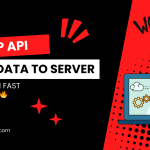The Best Fluffy Pancakes recipe you will fall in love with. Full of tips and tricks to help you make the best pancakes.
The Rise of Edge Computing in IoT
Internet of Things (IoT) technology has revolutionized the way we interact with devices and gather data. However, the sheer volume of data generated by IoT devices presents a significant challenge in terms of processing and analysis. Traditional cloud-based approaches have limitations when it comes to real-time data processing due to latency issues and bandwidth constraints.
What is Edge Computing?
Edge computing is a distributed computing paradigm that brings computation and data storage closer to the location where it is needed. In the context of IoT, edge computing involves processing data near the edge of the network, closer to the IoT devices themselves. This approach reduces latency, minimizes data transfer, and enables real-time data processing.
Benefits of Edge Computing in IoT
1. Reduced Latency: By processing data closer to the source, edge computing reduces the time taken to analyze and act on data, enabling real-time insights and responses.
2. Bandwidth Optimization: Edge computing helps in optimizing bandwidth usage by processing data locally and sending only relevant information to the cloud, reducing network congestion.
3. Improved Data Privacy and Security: Data processed at the edge is less vulnerable to security breaches and offers enhanced privacy as sensitive information does not need to travel to the cloud for processing.
Real-world Applications
Edge computing is being increasingly adopted across various industries for a wide range of applications:
– In healthcare, edge computing enables real-time monitoring of patient vitals and faster diagnosis.
– In manufacturing, edge computing is used for predictive maintenance of machinery and optimizing production processes.
– In smart cities, edge computing helps in managing traffic flow, monitoring environmental conditions, and enhancing public safety.
Challenges and Future Outlook
While edge computing offers numerous benefits, it also poses challenges such as standardization, security concerns, and managing heterogeneous edge devices. As the adoption of IoT continues to grow, the role of edge computing will become even more crucial in enabling real-time data processing and analysis for actionable insights.
Overall, the integration of edge computing in IoT systems is revolutionizing the way data is processed and analyzed, paving the way for faster decision-making, improved efficiency, and enhanced user experiences.




